
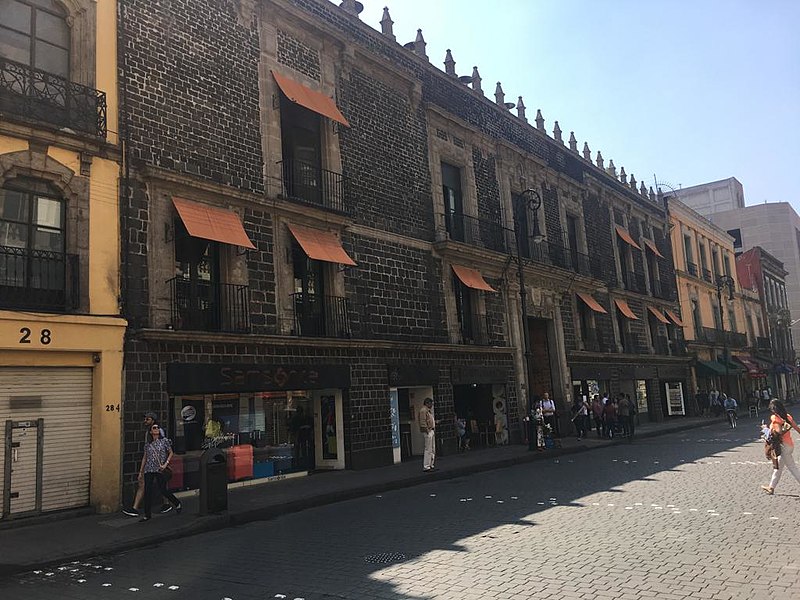
The Casa de los Condes de Miravalle is remarkable on so many levels. Perhaps the most inviting thing is that it’s easy and free to get into.
Today, the building is home to a rather shi-shi shopping center. It’s tasteful and a little pricey but still well worth a visit. There are also a very classy hotel, restaurant, and the whole lot that comes with an upscale mall. The fact that all of this is inside such a noteworthy and historical structure is just one more reason to love Mexico City.
The house was built by Alonso Dávalos Bracamontes de Ulibarri y de la Cueva (1645-1711). He was the first Count of Miravalle, and a prominent creole who’d inherited a fortune. According to legend, his ancestors had married into the Moctezuma II family and this only added to their fame. With the marriage came rights over Tlacopan, today’s Tacuba, which was considered the largest estate in the northwest of the city. Their descendants enjoyed massive privileges straight through the colonial era.
Built in the 17th century, it’s likely the oldest of the “Counts’ Palaces” in Mexico City. This Count’s wealth was so great that, to build this house, builders had to join several existing structures together. The building has been remodeled numerous times since the 18th century. It’s colonial design is still evident in its facade, walls, and quarried stone.
The façade is finished with pinnacles along the roof. These can be seen on most of the Baroque palaces in the city center, a reminder of the battlements that would have flanked earlier Spanish buildings. In 1846, the building came to house the Mexican Athenaeum, founded by Ángel Calderón de la Barca, the first Spanish ambassador to Mexico. For 80 years thereafter (1850 – 1930), the Bazar Hotel, one of the most important in the city, occupied the building.
In 1930, Francisco Sergio Iturbe acquired the property. Iturbe, an art patron, kept company with painters and sculptors of the time. He graced the building with a dignity that permitted it to survive the 20th century better than other similar structures. Iturbe transformed the entire building to convert part of the hotel into his own residence and the rest into smaller commercial spaces. He asked Manuel Rodríguez Lozano to create the mural on the imperial staircase landing. Titled “The Holocaust,” Lozano completed the work in 1944.
Iturbe donated a stone sculpture called Las Comadres to a park in Coyoacán. He later took the sculpture back citing a lack of interest by the park authorities. By artist Mardonio Magaña, the work is still on the stair landing in the building today.
In 1983 Messrs. Salvador Sandoval O. and his wife, Carmen Jiménez Sandoval, bought the house and commissioned the architect Miguel Miñón to restore it with the help of the National Institute of Anthropology and History and the National Institute of Fine Arts. In early December 1988, the Casa de los Condes de Miravalle became a shopping center.
![]() The Turibus Basilica Route stops here before returning to the Zócalo.
The Turibus Basilica Route stops here before returning to the Zócalo.
Sources cited on this page:
Mexico Heraldico: Palacio de los Condes de Miravalle
 contact@downtownmexico.com
contact@downtownmexico.com
 +52 55 5282 2199
+52 55 5282 2199
 http://www.downtownmexico.com/
http://www.downtownmexico.com/
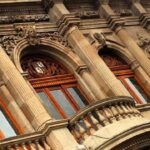
Nearest at 0.04 kms.
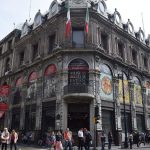
Nearest at 0.06 kms.
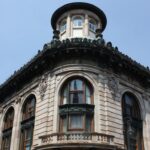
Nearest at 0.07 kms.

One of the most important sites in the city, even today, don't miss the chance to visit the Templo Mayor.
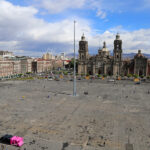
There's no center like the very center, and in Mexico City, that means el Zócalo!

The first Cathedral to have been built in the Americas.
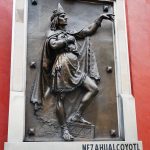
One of the most easily historical corners in the city center, it's a monument, a garden and much more.
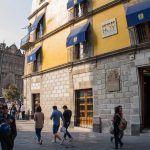
A museum dedicated to one of the oldest institutions in the hemisphere and its long role in Mexico City.